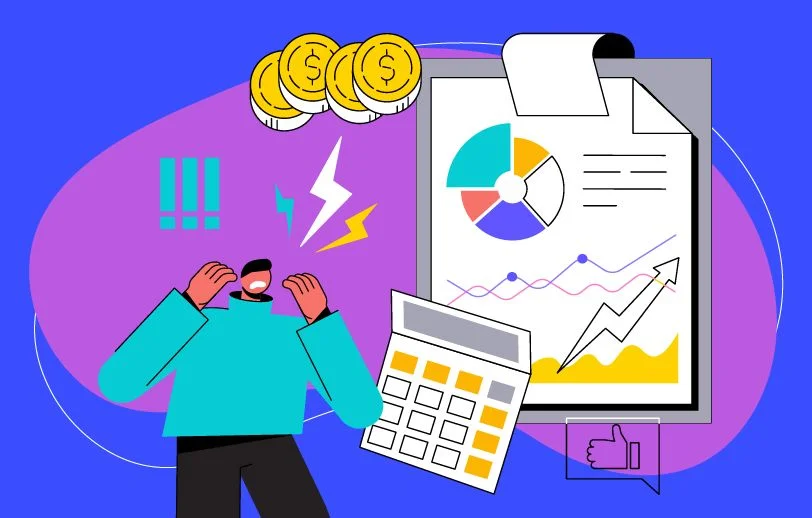Fewer surprises. Greater restaurant efficiency.
Fewer surprises. Greater restaurant efficiency.
In order to keep your restaurant profitable, it’s crucial that you keep a close eye on your restaurant’s costs. One of the most important restaurant financial statements you can prepare is the balance sheet.
However, many restaurateurs find managing their restaurant's balance sheet to be a daunting task. Keeping track of all your assets, liabilities, and equity can be overwhelming, especially if you don't have a background in accounting. Plus, there are specific challenges that come with managing a balance sheet in the restaurant industry, such as tracking inventory and dealing with perishable goods.
In this article, we'll walk you through everything you need to know to manage your restaurant's balance sheet effectively, from understanding the basics to tackling industry-specific challenges.
So let's dive in and get your restaurant's finances in order.
What Is a Restaurant Balance Sheet?
Restaurant balance sheet is a financial document that lists a restaurant’s assets, liabilities, and equity at a specific point in time.
It’s one of the three main financial reports for a restaurant business, along with the income statement (also known as the profit & loss statement) and the cash flow statement.
A balance sheet provides you with an overview of your restaurant’s financial health. It helps you understand whether your restaurant is breaking even, making a profit, or losing money.
Why You Need a Balance Sheet
A balance sheet can help you:
- Spot financial issues – By reviewing your balance sheet regularly, you can spot issues that could put your restaurant business at risk, such as insufficient cash flow and unsustainable debt levels. Check out this free cash flow projection template for restaurants.
- Cut costs – A balance sheet can also give restaurant owners an insight into their restaurant’s spending and help determine where to cut costs.
- Land investments – Potential investors will analyze your balance sheet to determine whether to invest in your restaurant.
- Secure loans – Your balance sheet will be one of the things creditors and lenders will consider when determining whether your restaurant qualifies for a loan.
How To Create a Restaurant Balance Sheet
Creating a restaurant balance sheet isn’t that hard. Here’s what you need to do:
1. Choose a Reporting Period
The first thing you need to do when creating a balance sheet for your restaurant is to choose a reporting period (the period of time you’re creating a report on) and the reporting date (the date on which you’re compiling the report).
You can opt for preparing balance sheets monthly, quarterly, semi-annually, or annually.
If you decide to prepare balance sheets on a quarterly basis, the reporting date will be the last day of the quarter.
In that case, your reporting dates throughout the year would be:
- Q1: March 31
- Q2: June 30
- Q3: September 30
- Q4: December 31
You can also prepare a balance sheet monthly. In this case, the reporting date would be the last day of each month.
2. Identify Assets
Once you’ve decided on a reporting period, you’ll want to identify all of your restaurant’s assets.
Assets include everything the restaurant owns, such as equipment, inventory, and cash.
There are three categories of assets:
- Liquid assets – Assets you can easily convert into cash (e.g., funds in your bank account or your liquor inventory).
- Non-liquid assets – These are assets that aren’t as easy to convert into cash (e.g., kitchen equipment, furniture, and other assets that can’t be liquidated easily).
- Intangible assets – Assets that aren’t liquid or non-liquid but still have market value (e.g., copyrights and trademarks, franchise agreements, etc.).
On your balance sheet, you will split your restaurant’s assets into two categories:
- Current assets – Assets you expect to convert to cash within a year (i.e., liquid assets).
- Fixed assets – Assets that were purchased for long-term use and which you don’t plan on converting to cash any time soon (i.e., non-liquid and intangible assets).
List each asset as a line item within the appropriate category, along with its value.
Then, subtotal each category separately. Finally, calculate total assets by adding up the value of both your current and fixed assets.
3. Determine Liabilities
The next step will be to determine all your restaurant’s liabilities.
Liabilities are your restaurant’s obligations toward other entities, such as accounts payable, accrued expenses, and loans.
These should be split into two categories:
- Current liabilities – Any financial obligations you need to satisfy within the next 12 months (e.g., utilities, rent, short-term loans).
- Long-term liabilities – Financial obligations you’re required to satisfy in the long-term, such as deferred income taxes or a capital lease.
Again, you’ll want to list each liability as a separate line item and then add up all the individual liabilities to calculate your restaurant’s total liabilities.
4. Calculate Equity
Your restaurant’s equity is what remains after you subtract total liabilities from total assets. It includes the owner’s initial investment in the restaurant, plus any additional profit made over time.
Equity should be listed in two separate categories:
- Contributed capital – All capital contributed by the owner and any investors.
- Retained earnings - The restaurant’s profits after accounting for any dividends.
You can then calculate your restaurant’s total equity by adding up contributed capital and retained earnings.
How To Analyze Your Restaurant Balance Sheet
Once you’ve prepared your restaurant’s balance sheet, you can analyze it to get a better understanding of how your restaurant business is doing. A restaurant's balance sheet can reveal several important insights about its financial health and performance.
Here are a few restaurant metrics you should take a look at:
- Current ratio – The current ratio can be helpful for understanding your restaurant’s liquidity. It shows your restaurant’s ability to pay short-term obligations and is calculated by dividing current assets by current liabilities.
- Quick ratio – A type of liquidity ratio that denotes your restaurant’s ability to pay for current liabilities with near-cash assets without having to sell inventory or obtain financing. It’s calculated by dividing your restaurant’s most liquid assets (cash and cash equivalents) by your total current liabilities.
- Return on assets – This metric shows you how profitable your restaurant is in relation to its total assets. To calculate your restaurant’s return on assets, divide your net income by your total assets.
- Return on equity – Helps you understand how profitable your restaurant is and how efficiently it generates profits. It’s calculated by dividing net income by the total shareholders’ equity.
- Debt-to-equity ratio – The debt-to-equity ratio shows you the extent to which your restaurant is reliant on debt. It’s calculated by dividing the restaurant’s total liabilities by the total shareholders’ equity.
Use a Balance Sheet To Make Sure Your Restaurant Stays Profitable
A balance sheet is a helpful tool for understanding your restaurant’s financial position and determining if you might need to chance certain things to improve profitability.
Further read:
FAQs
What should not be included in a balance sheet?
Items that should generally not be included in a balance sheet are contingent liabilities, future income or expenses, goodwill, R&D costs, operating lease obligations (in the past), prepaid expenses, deferred tax assets/liabilities, employee benefit obligations, interim dividends, and personal assets/liabilities of owners.
Do you put expenses on a balance sheet?
Expenses are not included on the balance sheet; they are recorded on the income statement. The balance sheet shows assets, liabilities, and equity, while the income statement reflects revenues and expenses over a specific period.

Boris Mustapic is a content marketer with a decade of experience in the digital marketing industry. He specializes in helping B2B SaaS companies drive growth through strategic, product-led content marketing.
More about the author